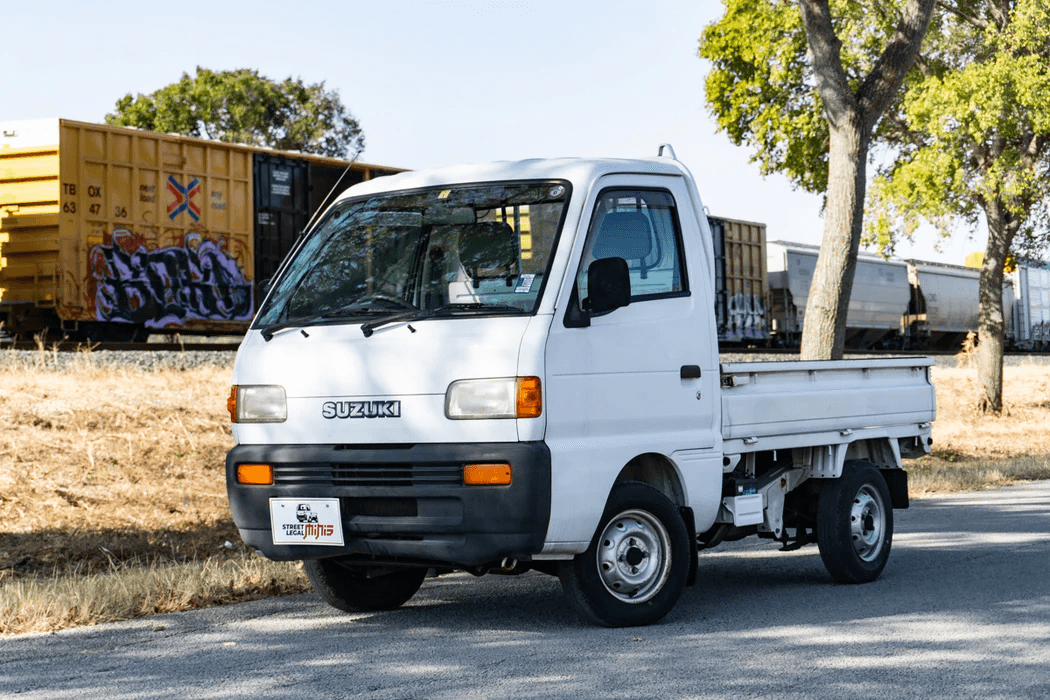Suzuki Carry Mini Truck: An Overview
What Is the Suzuki Carry Mini Truck?
The Suzuki Carry is a kei truck, a class of Japanese micro-trucks and vans defined by compact size, fuel efficiency, and affordable operation. Kei trucks must meet Japan’s strict size and engine displacement limits, making them incredibly maneuverable and cheap to run.
Over the decades, the Carry has been sold in multiple configurations: flatbed, dump bed, micro-van, and even as badge-engineered variants for brands like Mazda, Mitsubishi, and Nissan. It’s one of the most versatile mini trucks on the market, and its simple design makes it easy to maintain for decades.

A Quick Look at Suzuki Carry History
1961 - First Generation:
The first Suzuki Carry rolled out with a 359 cc two-cylinder, two-stroke engine producing just 21 hp. It was basic but effective, meeting Japan’s needs for a light commercial vehicle.
1985 - Eighth Generation:
A leap forward in comfort and capability, this generation introduced supercharged engines, improved cabins, and optional 4×4 models.
1991–1999 - Ninth Generation:
The Carry received a smoother body design, front disc brakes, and continued its global export success. Many of these models are still running strong today, making them a favorite among importers.
Today:
The Suzuki Carry continues to sell worldwide-especially in Asia, Africa, and niche markets in North America-where it’s often imported for farm use, landscaping, and recreation.
Why the Suzuki Carry Is So Popular
Compact Size, Big Capability - Fits down alleyways, through tight gates, and into spaces a full-size truck could never go.
Fuel Efficiency - Typical models deliver excellent MPG thanks to lightweight design and small-displacement engines.
Versatility - Available in 4×4, dump bed, or micro-van formats for different industries.
Durability - Built for years of hard work in demanding conditions.
Low Maintenance Costs - Simple mechanical systems mean fewer expensive repairs.
Buyer’s Tips for the Suzuki Carry
Consider 4×4 models if you’ll be on rough terrain. Look for Eighth or Ninth Generation units for a balance of affordability, parts availability, and reliability. Check badge-engineered siblings like the Mazda Scrum to expand your options.
Plan your parts sourcing-specialist importers and kei truck communities are great resources.
How to Import a Suzuki Carry
Importing a Suzuki Carry mini truck depends on the rules in your country, and while both the U.S. and Canada allow these kei trucks in, the criteria are slightly different.
For the U.S.:
25-Year Rule - To be exempt from DOT and EPA regulations, the vehicle must be at least 25 years old from its production date.
Original Specifications - It must retain its original engine and chassis configuration; heavy modifications may cause issues at customs.
Speed Restrictions - In some states, kei trucks are classified as low-speed vehicles (LSVs), with limits on highway use.
Paperwork Required - Original Japanese Export Certificate (or de-registration), bill of sale, and translated documents are essential.
For Canada:
15-Year Rule - Canada’s import laws are more lenient; vehicles 15 years old or older from the production month are exempt from CMVSS (Canadian Motor Vehicle Safety Standards).
Easier Provincial Registration - Once imported, registration requirements vary by province but are generally straightforward for older kei trucks.
Winter Use Considerations - If you plan to drive in winter, some provinces require rust-proofing or tire requirements for imported vehicles.
Pro Tip:
Work with an experienced import broker or dealer who specializes in Japanese vehicles or get a guide on importing your very own tiny japanese truck. They can help navigate customs paperwork, arrange shipping, and ensure your Suzuki Carry meets local compliance before it leaves Japan.